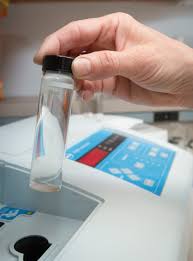Drinking water testing labs: accreditation and licensing
The rules
Under the Safe Drinking Water Act, labs must be accredited and licensed to test drinking water.
the Ministry of the Environment, Conservation and Parks:
licenses laboratories
inspects laboratories
ensures that laboratories comply with laws and rules around drinking water testing
A drinking water testing licence authorizes a laboratory to carry out analysis for specific drinking water tests by approved analytical techniques.
If you are accredited to certain international standards, you can apply for a licence to test drinking water. The licence allows you to test drinking water for the parameters specified on your drinking water testing licence.
You will be granted a licence for at least one of the following parameter “classes”:
microbiological
organic chemical
radioanalytical
physical/other
inorganic chemical
The drinking water testing licence is valid for up to five years and an annual licensing fee applies. The drinking water testing licence indicates which parameters and methods a laboratory is licensed for under a specific class.
Laboratories must publicly display the drinking water testing wall certificate at the laboratory, so that clients know what classes a laboratory is licensed to perform. A copy of the laboratory’s drinking water testing licence should also be available upon request.

Water quality testing systems
Universal access to safe and affordable drinking water is still a challenge. In remote areas, E. coli is a common contaminant, and timely, accurate and reliable water quality data is hard to come by.
Solutions is a non-profit organisation working to find innovative ways of reducing poverty. In 2018, received a grant to perform E. coli tests using innovative technologies. Using water quality testing solution, an experiment was conducted on the drinking water
The challenge
Water quality testing in remote areas is a challenge. Usually, it’s done by collecting a limited number of water samples and transporting them to laboratories. The time required to perform and complete the tests, as well as the transport and laboratory costs, results in high costs per test and questionable data quality. Samples may get altered in transit and results are not timely, which can lead to interventions based on inaccurate data.
The partnership
wanted to find an alternative solution to lab testing for E. coli contamination in remote areas. joined forces to conduct an experiment using water quality testing system. With data platform and hardware, instant field tests are connected to a mobile-phone based data collection application and real-time decision making dashboards.
The change
The results revealed that between 80% and 83% of the time, the results from water quality testing system matched the laboratory test results for E. coli in drinking water. The system also reduced the amount of time it took to perform 1000 tests by 67%, providing timely insights for immediate decision making.
DRINKING WATER
Drinking Water Standards are the government issued regulatory requirements for the consumption of drinking water.
Drinking water quality will vary greatly depending on rainfall run-off and the land use of the surrounding catchment. It is always advisable to check whether your drinking water meets the requirements of the Drinking Water Standards. This is especially important as water quality is largely impacted by the local environment and can be impacted by contaminants such as nitrates and E. coli.
Groundwater that is low in pH can attack copper piping leading to high levels of dissolved copper.
Important for ion balance check and other parameter estimation. Used to calculate TDS.
Bores close to the ocean can have elevated levels. Water from limestone aquifers can also be high in TDS.
Important for interpretation and other parameter estimation.
High hardness may cause scale deposition and scum formation. Water with low hardness (<100) may be more corrosive.
Important nutrient indicative of fertiliser application and other anthropogenic inputs, health concern (can cause methaemoglobinaemia in bottle fed infants)

Water Testing
Testing Your Well Water
Safe drinking water is important to your health, but how can you tell if your well provides safe water? Public water systems are tested regularly, but if you have a private well, regular testing is up to you. To assure safe drinking water
Department of Health recommends the following:
First, make sure that your well is located, maintained, and constructed properly
Test your water anytime your well is serviced, or you notice a change in taste, color or odor
Regular water testing should be conducted as follows.
For Nitrates & Manganese, always test before giving to an infant and anyone in your house that becomes pregnant. Testing is even more important if young children drink the water (Safe Drinking Water For Your Baby).
Depending on where you live may also be a factor to consider when testing your water. For example, manganese is a naturally occurring element found in drinking water across, and has recently been found to cause neurological problems, especially in infants over time. For more information on manganese
Water Testing
How much will the water test cost?
Effective February 1, 2017, the following fees apply:
$12.80 for nitrates
$14.40 for coliform
$13 for arsenic
$13 for lead
$13 for manganese
What water tests are required when selling your home?
Coliform Bacteria and nitrates are the two most common tests done to determine if the water is safe for human consumption. Their presence indicates the water has been contaminated, or is being contaminated, from an organic source, and it may be contaminated with some disease causing organisms or substances. Other tests like lead or arsenic can also be required by a lending agency.